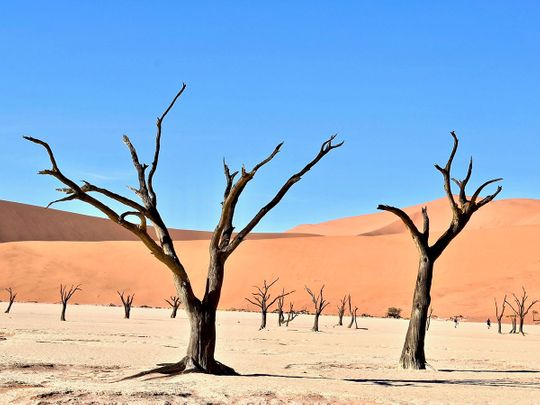
Gnarled roots and wrinkled bark that has witnessed ages pass. Soaring canopies of bright green, anchored by solid, immovable branches.
The grand old trees of the world are a sight for sore eyes. But sadly, they are dying out, leaving forests of the world younger, and shorter, than ever before.
Click start to play today’s Word Search, where you can find different tree species.
According to a June 2020 study published in the US-based journal Science, bigger, older trees are dying at increasingly high rates, leaving forests younger and reducing their ability to store the excess carbon dioxide generated by our fossil fuels. Their eradication also places biodiversity under threat and eliminates important plant and animal habitats.
The study found that between 1900 to 2015, the world lost more than a third of its old-growth forests. And there is no sole or direct cause. The consequence is from decades of deforestation and logging, along with temperature increase due to climate change, harsher droughts, wildfires, and more severe outbreaks of insects and disease.
For the 60,000 species of trees on Earth, these causes play out differently across different regions. In California, US, for instance, giant sequoias can survive for over 3,000 years, with their massive trunks stretching two car lengths in diameter and their branches reaching nearly 300 feet into the sky. But according to a May 2020 National Geographic report, amid a record drought a few years ago, scientists found that the massive trees in Sequoia and Kings Canyon National Parks in the US were dying in a surprising way – from the top down.
The reason for this strange and untimely death, researchers discovered, was insects – cedar bark beetles, to be specific, which had bored into the tree branches. While scientists had seen this behaviour in pine trees, they thought the stately sequoias’ pest-repelling tannins were immune to such dangerous bugs. Scientists are now working to understand whether a combination of increased drought and wildfire, or the effects of climate change, have caused sequoias to become more susceptible to potentially fatal insect invasions.
Global warming has already been found to significantly magnify the cause of tree death in other parts of the world, from Mongolia’s birch and larch groves to Israel’s eucalyptus and cypress plantations. In Brazil’s Amazon rainforest, dry seasons are lasting longer and occurring more frequently, and rainfall has dropped by as much as 25 per cent. When it does fall, it arrives in cascading torrents, causing massive floods. These changes are shaping the forest’s assortment of trees, allowing those that grow fast and are more tolerant of dry weather to outcompete those that require damp soils.
With all these relatively new issues playing a role in the survival rate of trees, what will the forests of the future look like? If sprawling canopies of massive, mature trees give way to slender, shorter trees with sparse cover, how will this tremendous change impact the Earth’s ecology and biodiversity?
Play today’s Word Search and let us know what you think at games@gulfnews.com.









